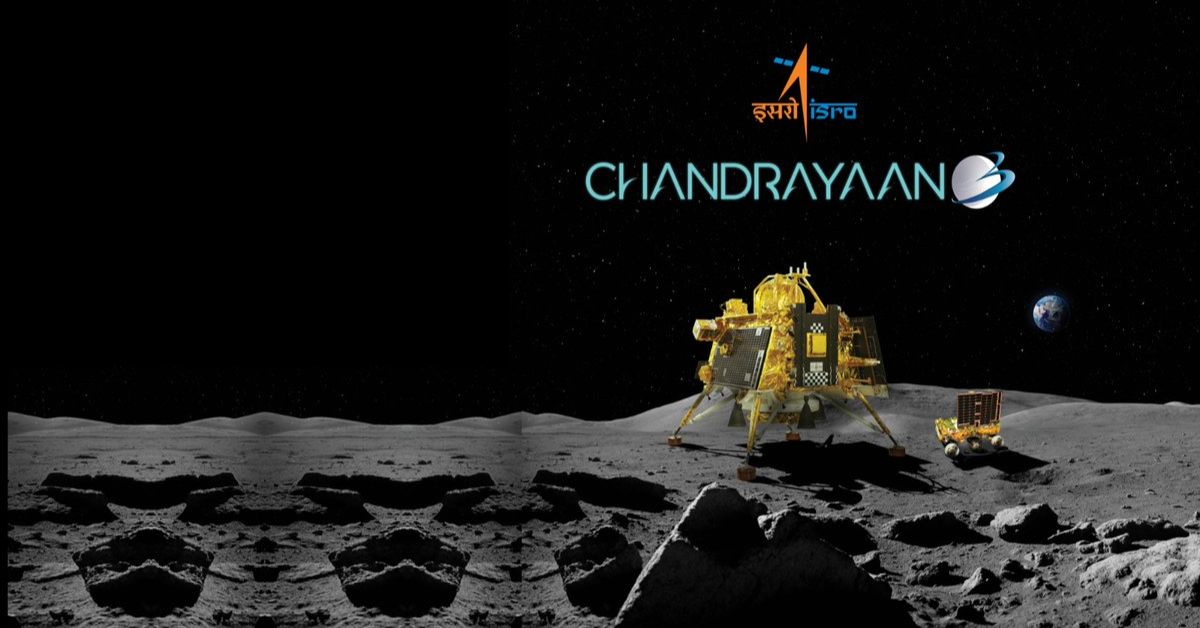India plans to use its Chandrayaan-3 spacecraft to investigate an unexplored region of the moon just days after Russia’s aborted lunar landing. Around 7:50 AM Eastern, tune in here for live coverage.
The headquarters of India’s space agency are the center of much anticipation. Human talk has overwhelmed the low hum of the weak air-coolers in the media tent outside ISRO’s Mission Control room in Bengaluru. Flowers decorate an empty podium in front of a big LED screen displaying a holding pattern, while banners proclaiming “Chandrayaan Mission Soft Landing Event” have been unfurled.
The Tragic Downfall of India’s Final Lunar Lander
The Chandrayaan-3 mission’s Vikram lander and Pragyan rover are nearly identical to the ones on Chandrayaan-2. Their names haven’t altered at all.
On September 6, 2019, when the Chandrayaan-2 lander was only a couple of kilometers above the surface, everything seemed to be going according to plan. Then its course began to deviate from what had been anticipated.
The tweet below verifies the news:
Breaking News: India’s Chandrayaan-3 spacecraft completed a lunar landing, making the country the first to reach the moon’s southern polar region.
Follow our updates.https://t.co/GEFD8N070L
— The New York Times (@nytimes) August 23, 2023
The Russian Space Program had a Rough Weekend
The robotic Russian Luna-25 project appeared to be on track on August 11 to prevent the Indian Chandrayaan-3 mission from landing on the moon first this year. However, the outcome was not as expected.
A Mix of Pride and Anticipation Mounts Ahead of the Moon Landing
Wednesday in India was filled with anticipation and enthusiasm. There were special rituals and live broadcasts of the moon landing at schools across a country renowned for its scientific prowess. The expedition was prayed for at Hindu temples, Sikh Gurdwaras, and Muslim mosques, marking a rare moment of religious harmony in these divisive times.
If you want to stay on top of everything happening in California, read the California Examiner:
- The Ultimate Guide to Choosing the Right Cleaning Service in Los Angeles
- The Desantis Campaign Provides Funders and Supporters With a Debate Strategy
Look back at the Launch of Chandrayaan-3 to the Moon
It has been over a month since the Chandrayaan-3 was sent to the moon by the Indian Space Research Organization, or ISRO. Luna-25, a mission launched by Russia over a month after Chandrayaan-3, took only five days to reach lunar orbit.
In contrast, India’s path to the moon was circuitous but less energy intensive. It didn’t enter lunar orbit until August 5 after being launched on July 14.

India’s Space Ambition Mirrors the Country’s Rise as a Geopolitical Power
India’s diplomatic push as an ambitious rising power is mirrored in the country’s recent space exploration initiatives. New Delhi has been pushing for a multipolar world order in which it is recognized as crucial to resolving international issues.
The government of Prime Minister Narendra Modi has sent a resounding message on several fronts, including space exploration: the world will be a better place if India takes on a leadership role, even while the world’s most populous nation struggles to meet the basic needs of its people.
If you want to know about breaking news in California as it happens, you should add the California Examiner to your bookmarks.




